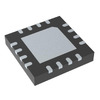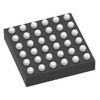Manufacturer Part Number
TMUX6219DGKRQ1
Manufacturer
Texas Instruments
Introduction
The TMUX6219DGKRQ1 is a high-performance 2:1 multiplexer/demultiplexer from Texas Instruments, designed for automotive and industrial applications requiring high precision and reliability.
Product Features and Performance
Single SPDT configuration
2:1 multiplexer/demultiplexer circuit
Low on-state resistance of 6.2 Ohm
Channel-to-channel matching (ΔRon) of 80mOhm
Fast switching times (Ton: 180ns, Toff: 210ns)
High bandwidth of 42MHz
Minimal charge injection of -6pC
Low channel capacitance of 38pF
Ultra-low leakage current (100pA Typical)
Exceptional crosstalk performance (-106dB @ 1MHz)
Product Advantages
Precision signal handling capabilities
High-speed performance for time-critical applications
Minimized signal disturbances ensuring clean output
Suitable for sensitive signal applications due to low noise interference
Key Technical Parameters
On-State Resistance (Max): 6.2 Ohm
Voltage Supply, Single (V+): 4.5V ~ 36V
Voltage Supply, Dual (V±): ±4.5V ~ 18V
-3db Bandwidth: 42MHz
Operating Temperature: -40°C ~ 125°C
Quality and Safety Features
Compliant with AEC-Q100 automotive qualification standard
Robust design suitable for harsh automotive environments
Compatibility
Compatible with a variety of digital and analog signal management applications
Easy integration with surface mount technology (Mounting Type: SMT)
Application Areas
Automotive systems
Industrial process control
Data acquisition systems
Communication systems
Product Lifecycle
Currently in active production
No indication of near-term discontinuation
Ongoing support and availability of replacements
Several Key Reasons to Choose This Product
High reliability under automotive conditions with AEC-Q100 qualification
Ability to operate efficiently across a broad voltage range (4.5V ~ 36V)
Precision engineering ensuring low distortion and high fidelity in signal handling
Fast switching capability is suitable for high-frequency applications
Strong crosstalk suppression enhances signal integrity in multi-signal environments




 TMUX7211PWRTexas Instruments
TMUX7211PWRTexas Instruments TMUX646NZECRTexas InstrumentsIC MULTIPLEXER
TMUX646NZECRTexas InstrumentsIC MULTIPLEXER TMUX6219RQXR
TMUX6219RQXR